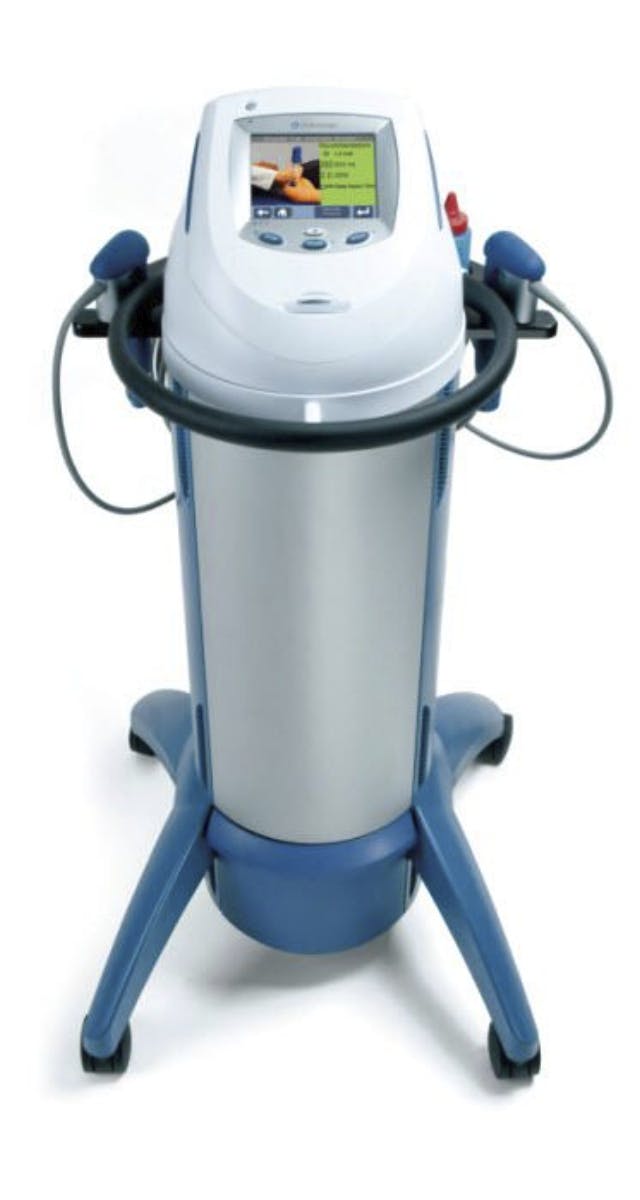
Shockwave therapy, also known as Extracorporeal Shockwave Therapy (ESWT), is a non-invasive treatment method used in physiotherapy to help promote healing and pain relief. It utilizes high-energy acoustic waves to stimulate the body’s natural healing processes.
How It Works:
Acoustic Waves: Shockwave therapy delivers high-energy acoustic waves to the affected area. These waves are generated by a device and are focused on the specific area of the body that requires treatment.
Stimulating Healing: The acoustic waves create microtrauma in the tissues, which stimulates the body’s natural healing response. This includes increased blood flow, the formation of new blood vessels (angiogenesis), and the production of healing factors.
Reduction of Pain: Shockwave therapy can also have a pain-relieving effect by disrupting pain signals and stimulating the release of endorphins, the body’s natural painkillers.
Conditions Treated:
Tendon Injuries: Shockwave therapy is often used to treat conditions such as Achilles tendonitis, plantar fasciitis, tennis elbow, and rotator cuff tendonitis.
Muscle Injuries: It can also be used for conditions like muscle strains and myofascial pain syndromes.
Bone Healing: Some studies suggest shockwave therapy may help promote bone healing in conditions like non-union fractures.
Joint Conditions: Shockwave therapy may also be used for certain joint conditions, such as hip pain or knee osteoarthritis.
Procedure:
Preparation: The area to be treated is typically marked, and a gel is applied to improve the transmission of the shockwaves.
Application of Shockwaves: The physiotherapist then uses a hand-held device to deliver the shockwaves to the specific points on the body.
Duration: A session usually lasts about 10-15 minutes, depending on the area being treated and the condition.
Benefits:
Non-Invasive: Shockwave therapy is non-surgical and non-invasive, making it a good option for those who want to avoid surgery or invasive procedures.
No Downtime: Most people can resume their regular activities immediately after treatment, though some mild soreness may occur.
Effective Pain Relief: Many patients experience significant pain relief and improvement in function after shockwave therapy.
Long-Term Healing: The stimulation of the body’s natural healing processes can lead to long-term improvements, especially when combined with other forms of physiotherapy.
Risks and Side Effects:
Mild Discomfort: Some patients may experience mild discomfort during the treatment.
Redness or Swelling: Temporary redness or swelling at the treatment site is possible but usually resolves quickly.
Rare Complications: While rare, more serious side effects such as bruising, numbness, or skin damage can occur.
Number of Sessions:
The number of sessions needed varies depending on the condition being treated and the individual’s response. Typically, a series of sessions spaced a week or two apart is recommended.
Conclusion:
Shockwave physiotherapy is a valuable treatment option for various musculoskeletal conditions, providing pain relief, promoting healing, and improving function. As with any medical treatment, it’s important to consult with physiotherapist at Medhealth Physiotherapy to determine if shockwave therapy is suitable for your condition. They can provide personalized advice based on your specific needs and medical history.
